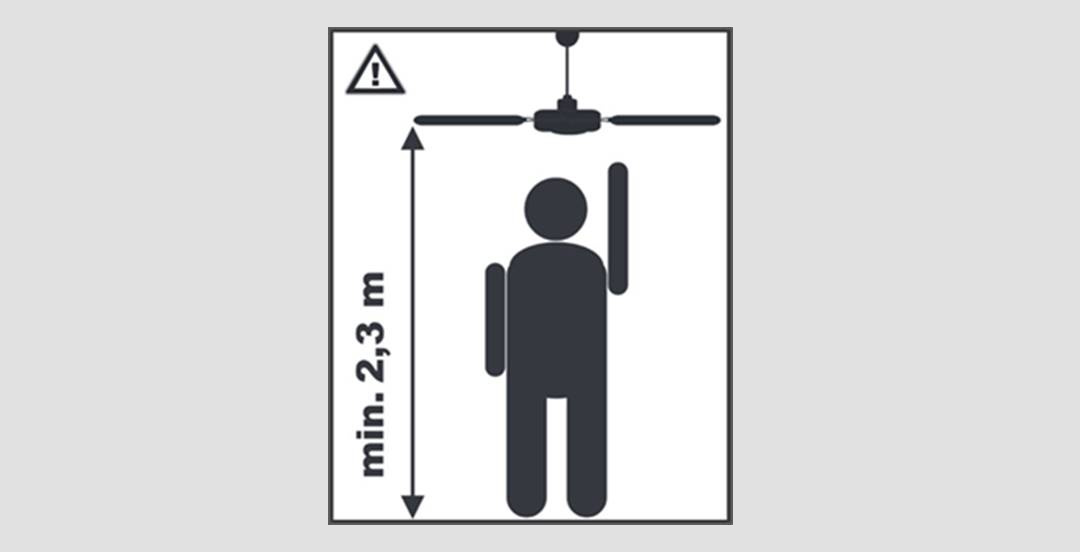Minimum height under blades: what are the safety rules?
Ceiling fans are high-speed devices.
Let’s take the case of a common blade fan[1]. Its rotation speed often exceeds 200 rpm. That’s 50 km/h at the tip of the blades!
A head-on collision with a spinning blade at 50 km/h can be a nasty experience, particularly if you are hit on the hand or head.
To take this into account, let’s look at the safety rules that have been laid down to limit the risk of injury.
[1] diameter 1.32 m
Overseas, regulations ahead of the game?
Ceiling fans have been around for a long time in these regions.
The first regulations in the French overseas departments and territories to describe safety height rules for air blowers is the RTAA DOM.[i]. The current application sheet, contains the following recommendation [ii]:
Minimum height under blades
If fans are installed under the ceiling, a minimum height under the blades must be defined for safety reasons.
The minimum height between the finished floor and the fan blades is generally one of the recommendations provided by the industry. This is usually set at 2.30 m if there is no protective device.
More recently, the thermal regulations for Guadeloupe, drawn up with the active participation of the CSTB [iii]and published at the end of 2019, are even more precise:[iv]
Recommendations for the installation of ceiling fans: constraints on ceiling height where there is a ceiling fan or ceiling fan cavity
- We recommend that you comply with the height of the blades specified in standard NF EN CEI 60335-2-80, i.e. a minimum of 2.30 m ;
- The height of the fan (distance between blade and ceiling), which varies according to the model, must also be taken into account when determining the ceiling height;
- If the fan height is not known at the time of construction, it is recommended that a minimum fan height of 0.3 m be used. In this case, a minimum fan height of 0.3 m is recommended, or the occupant should be told which fan models are compatible with the dwelling.
RE2020: what are the rules on blade height?
Ceiling fans were not widely used in mainland France for a long time. This is now changing with the arrival of the RE2020, which strongly promotes the use of fans to improve summer comfort.
The regulations state that the model of fan used “is valid for ceiling heights of less than 3m”.
The Order of 6 April 2022 on the RE2020 specifies two points in Article 4, paragraph VII:
- The ceiling fans that can be taken into account are the fans fixed to the frame.
- They are installed in such a way as not to present a danger to the occupants.
So only ceiling-mounted fans are considered.
Secondly, of course, the safety of the occupants must be ensured. Compliance with the international standard NF EN CEI 60335-2-80 (see below) is the benchmark in this respect.
Standard NF EN CEI 60335-2-80: 2.30 m under the blades!
Standard NF EN 60335-2-80, which can be found on the AFNOR website, concerns the safety of electric fans for domestic and similar purposes. It falls within the scope of the Low Voltage Directive n° 73/23/CEE of 19/02/1973 modified by 93/68/CEE of 22/07/199312.
This standard specifies that: “the installation instructions must indicate that the fan must be installed in such a way that the blades are more than 2.30 m above the ground”.
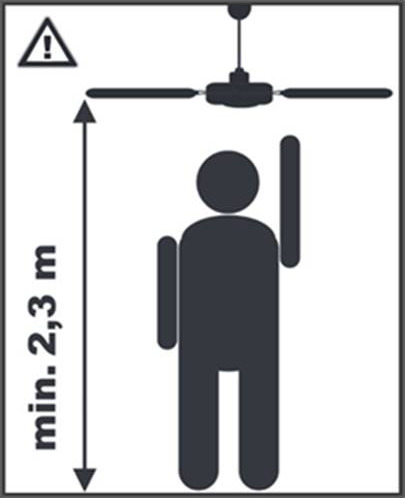
Figure 1: Minimum blade height
Why 2.30 m?
The standard does not explain where this value comes from. However, it is likely to be based on the average height of a man with his arm raised.
The architect Le Corbusier, for example, designed his housing units from 1945 onwards, on his return from a trip to the USA, on the basis of the average height of a man, i.e. 1.83 m (6 feet was in fact the average height of men in the USA). We get 2.26 m with arm raised.
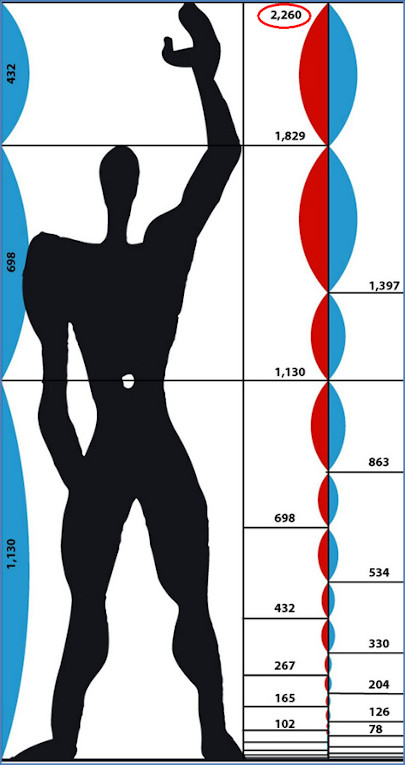
Figure 2: The Modulor (Le Corbusier)
In these conditions, a height of 2.30 m limits the risk of hand injury caused by the blades.
Extra-flat draught excluders: a solution to improve safety?
In the United States, the term “hugger fans” (extra-flat or flush fans, i.e. fans flush with the ceiling) is used to describe extra-flat fans suitable for homes with low ceilings.
This family has developed well internationally, particularly in countries such as Australia and Singapore where the air blower is a common product.
In terms of performance (airflow, power consumption, etc.), they are fairly similar to long-stem fans, so they fulfil their purpose perfectly.
In a country such as France, the most common ceiling height in new buildings (in any case in housing) is 2.50 m.
With such a height, compliance with the 2.30 m rule logically suggests fans with a distance between the ceiling and the base of the blades of no more than 20 cm. This is clearly restrictive, but in terms of safety, it is fully justified.
In short, the future looks bright for extra-flat fans!
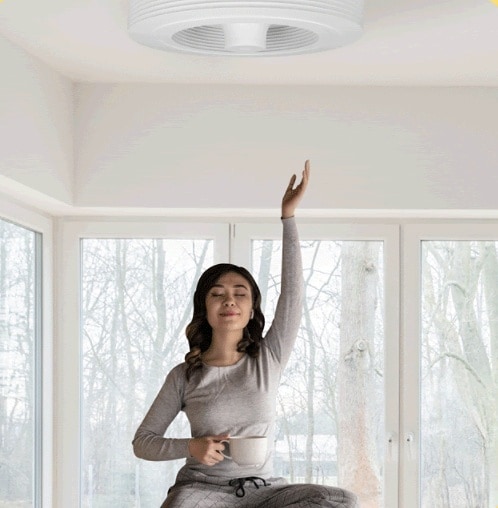
With Exhale, the slimmest ceiling fan on the market (18 cm), you can comply with the 2.30 m safety standard, even for 2.50 m ceilings.What’s more, the absence of blades on the Exhale ceiling fan considerably reduces the risk of injury.
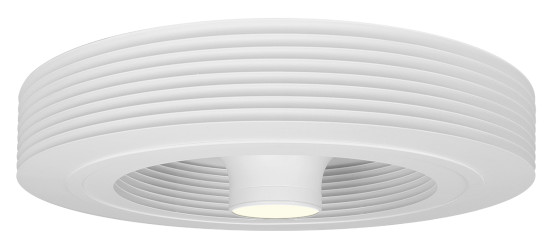
Exhale, the first vortex-effect ceiling fan without blades
Are you a professional? We have a dedicated area for you.
Find Exhale Fans Europe on Linkedin

